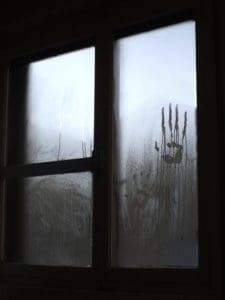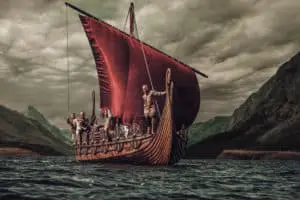The Stunning Way Ancient Egyptians Honoured Cats
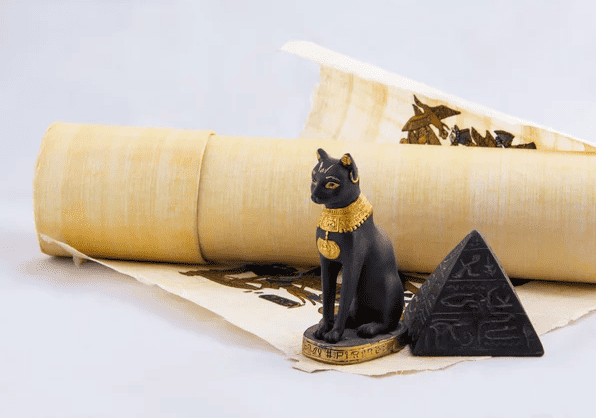
Updated On: February 19, 2024 by Noha Basiouny
Time spent with cats is never wasted.
Sigmund Freud
Yes, Freud really said that!
When they are young, they follow us everywhere. They stick with us like monkeys clinging to tree branches, dive head-first into our cereal bowls, and crawl over the couch and our arms to sleep on our shoulders, and we love it. They look at us and meow these little heartwarming meows that make it incredibly hard to resist the already irresistible urge to bite them, and we love it. They ask for our attention, and we happily give it all to them.
But when they are old, we barely get any of their attention. Cats turn into couch potatoes, where they relax and sleep most of the day and do not move except to eat and, you know, answer the call of nature. But at night, they get all active and turn our living rooms into playgrounds. They run infinite laps and shoot anything they come across, and we do not even get to complain about it, for it is not their fault they are nocturnal.
Then all of a sudden, they remember we are asleep, not desperately trying to get back to sleep thanks to the disturbance they caused. So they decide to cut the madness out and come join us in bed. They jump on our faces or sit on our chests, either because it is comfortable up there or to wake us up by pushing us towards the verge of suffocation!
But like a teenager who never learns from their mistakes or a heavy smoker never planning to give up, we still love cats. Even when they make the best definition for ‘bastards’, we still love them.
We actually cannot but love them.
Celebrating cats
On 8 August every year, the world recognises International Cat Day, on which mainly cat people spread awareness about those cute tiny creatures. It was the International Fund for Animal Welfare that established that day back in 2002 to get more and more people to celebrate and offer more help to cats.
This is nice and all, but some may wonder in confusion, “Do we not celebrate cats enough already?”
Well, yes, we do. Cats are actually one of the most widespread, loved, kept, taken care of and celebrated species on this planet.
As reported by Youtube itself, by August 2022, over 18 million videos of cats had already been uploaded to the platform since January of the same year. Most of these videos show household cats either playing, goofing around, fighting, cooking, purring, snoring or being saved, fostered and taken care of.
If those millions of videos and their billions of views indicate anything, it would be how much people love cats and find huge entertainment in watching them being just themselves. Enjoying such content undoubtedly has a positive influence on how people generally perceive and treat cats. Even those who do not necessarily identify as cat people may find themselves more interested in adopting a cat.
That being said, no people seem to have held as much regard for cats as ancient Egyptians. In fact, they loved, cared for and honoured them so much that they came that close to turning them into deities, cute, little yet proud and fierce deities, of course.
Even nowadays, a large sector of the Egyptian population, too, loves cats so much. Many Egyptians keep pet cats, give them funny, authentic names and consider them part of their families. One of the most interesting things Egyptians do, which we find highly honouring, is how they eat Molokhia, their famous green soup dish. They roll small pita bread pieces and make them into the shape of a cat’s ears to fill them with soup. This is commonly known as Wedn Otta!
Animals in Ancient Egypt
But apart from the cat’s ear thing, for we do not want to end up demonstrating a how-to-make-the-best-Egyptian-Molokhia recipe instead, one cannot help but wonder, how exactly did ancient Egyptians honour cats? And why? Did they really worship them, as some sources on the Internet claim?
Well, not exactly.
There is a common misconception that ancient Egyptians worshipped not only cats but many other animals as well, yet, this cannot be further from the truth. Plain and simple, ancient Egyptians did not worship animals, but they did depict their many, many deities as animals, which in turn made them divine symbols.
Ancient Egyptian religion
To explain this even more, let’s take a step back and learn about the ancient Egyptian religion.
Ancient Egyptians were polytheistic. They believed in over 1,400 gods and goddesses. Each of those deities had a specific name, was characterised by some traits and did a different job.
Ancient Egyptians formed cults for each deity, centralised them in different cities, and built temples and shrines where they could be worshipped and offered sacrifices to. Yet, in order to make those deities even closer to their imaginations, ancient Egyptians represented each by an animal that shared the same traits with the deity.
OK. That is nice, but “why animals?”, we hear you asking?
Well, ancient Egyptians were always trying to be one with mother nature. Instead of feeling they were the centre of the Universe like we unfortunately do today, they had a deep appreciation and gratitude for every force of nature and every creature that preserved the balance of the ecosystem they all lived in. To show that appreciation, they depicted their deities with animals which they admired so much and believed in their unmatched solid abilities.
For instance, a baboon represented Thoth, the god of wisdom, knowledge, and writing. Baboons are intelligent, and we all know how Disney nailed it when they cast Rafiki as the wise monkey in The Lion King. Likewise, the strong and aggressive falcon represented Horus, the god of war and the sky.
More than just symbols
According to researchers, ancient Egyptians considered cats extraordinary creatures, maybe even magical, with exceptional abilities. They kept cats as pets, let them live in the same houses with them, treated them as companions, fed them, played with them and considered them an essential member of the family whose loss caused them a lot of grief. So when it came to cats, they were more than just divine symbols.
And just like how you make your fluffy grey Persian cat’s picture your phone’s lock screen background, talk about him to everyone you know, make his name your Wi-Fi password and only use Instagram to post stories of him goofing around or trying to catch Molly, the tiny blue fish you keep at your mini aquarium, ancient Egyptians did just the same but in their very own way.
Ancient Egyptians made wooden figures and stone statues of all different sizes of cats standing gracefully and elegantly and mostly wearing collars and sometimes earrings. They excessively painted cats on papyrus and the walls of their temples and tombs, even more than they painted any other animal.
Cats were often shown in the company of the deceased in scenes from their earthly life together. This shows how much of an essential creature cats were in ancient Egyptians’ lives; they even took them with them to the afterlife.
Ancient Egyptians even went as far as mummifying cats, wrapping them in linen, which made them look like burritos, and burying them either with their deceased or in their own cemetery. Yes! ancient Egyptians had already created cemeteries for animals, many of which were dedicated to cats only.
Egyptian Mau
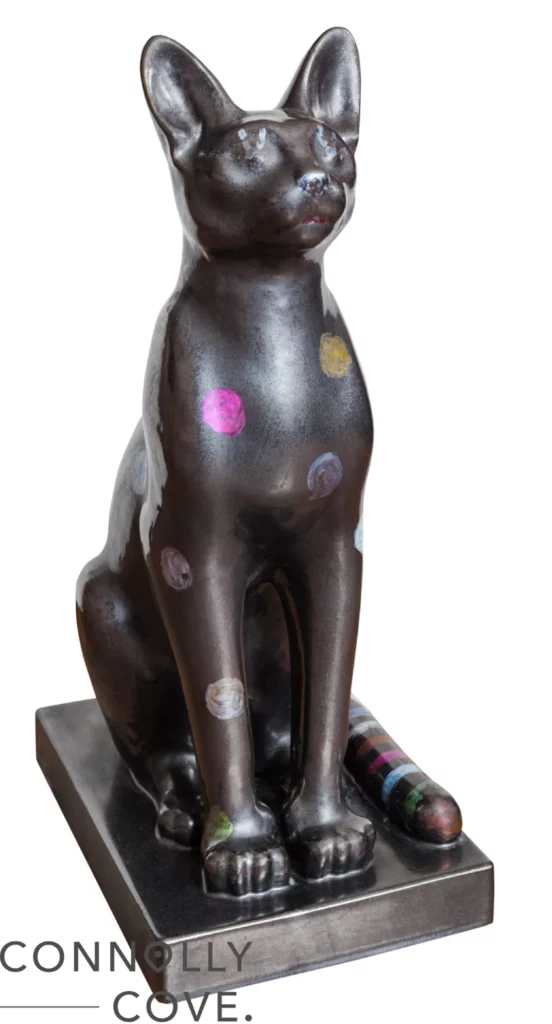
So these cats ancient Egyptians loved so much were the Egyptian Mau cat breed, which originated in Egypt and happened to be quite special.
The Egyptian Mau, which still lives to date and is found everywhere on the streets of every district in Egypt, is a beautiful, elegant, small-to-medium-sized but muscular, already rare cat breed with short hair and a striped coat. It is the fastest of all 73 domestic cat breeds found now worldwide thanks to its unique body structure.
The Egyptian Mau’s back legs are longer than its front ones. It has a uniquely designed skin that allows those long hind legs to stretch backwards and further than any other cat, making its step longer and its speed higher. In fact, Egyptian Maus can run at over 48 kilometres per hour. This is the minimum running speed of their bigger, also striped, uncle, the tiger.
Another thing that makes the Egyptian Mau really unique is its rare biological characteristics. For instance, it is a naturally spotted cat where the spots are only found on the tips of the coat, which happens to be a rare quality. All adult Maus have green eyes, and they come in six different colours, including silver, smoke bronze, black and even blue. Have you ever seen a blue cat before?
In addition to these fantastic physical characteristics, Maus actually have musical voices. Whenever they feel stimulated, they can produce a wide range of sweet-sounding tones, each delivering a specific message. Besides, Egyptian Maus are active, very playful, friendly and loyal to their owners, and they love warm temperatures, which has always been a feature of Egypt’s climate.
Ancient Egyptians were apparently aware of some or most of these outstanding traits, especially the ones related to the character, and that may be why they believed cats were so special. Yet, one sure thing ancient Egyptians loved about cats and used them to symbolise their deities was the big deal of the duality those creatures have.
While Egyptian Maus are highly protective and extremely loyal, they are not so dependent on their owners, nor are they sickly attached to them. They are gentle and playful but can also be fierce and predatory. Sometimes they are cute, and the next moment, they frown and look scary, especially when their pupils turn vertical. They like cuddling but also get aggressive, jealous and fighty.
While some may refer to this as schizophrenic, ancient Egyptians called those behaviours dual nature, fell in love with them and considered them a sign of power and fierceness.
Mafdet
OK. Now that we understand why and how ancient Egyptians very well regarded cats, let’s take a look at the goddesses they symbolised with them.
Ever since the first Dynasty, which marks the official start of the ancient Egyptian civilisation, cats, since they are innately predators, were recognised mainly for protecting ancient Egyptians and their homes by killing snakes and scorpions. This was reported in the Book of the Dead, a funerary collection of texts and spells that were used to guide the deceased in the afterlife.
This made ancient Egyptians perceive cats as guardians, which qualified them, the cats not ancient Egyptians, to represent the goddess Mafdet, who protected the pharaoh from the bites of snakes and scorpions. She was one of the most prominent goddesses from early on and stayed on duty, if we can say that about a goddess, for thousands of years.
Mafdet was often depicted as a cat-headed woman wearing a cheetah’s skin. She was utterly immune to the bites of scorpions and protected both the pharaoh and the Sun god Ra from venomous snakes as well. This role of Mafdet was also mentioned in the earliest forms of Egyptian religious texts, which by the way, were not written on papyrus but instead on the walls of some pyramids in Saqqara.
Bastet
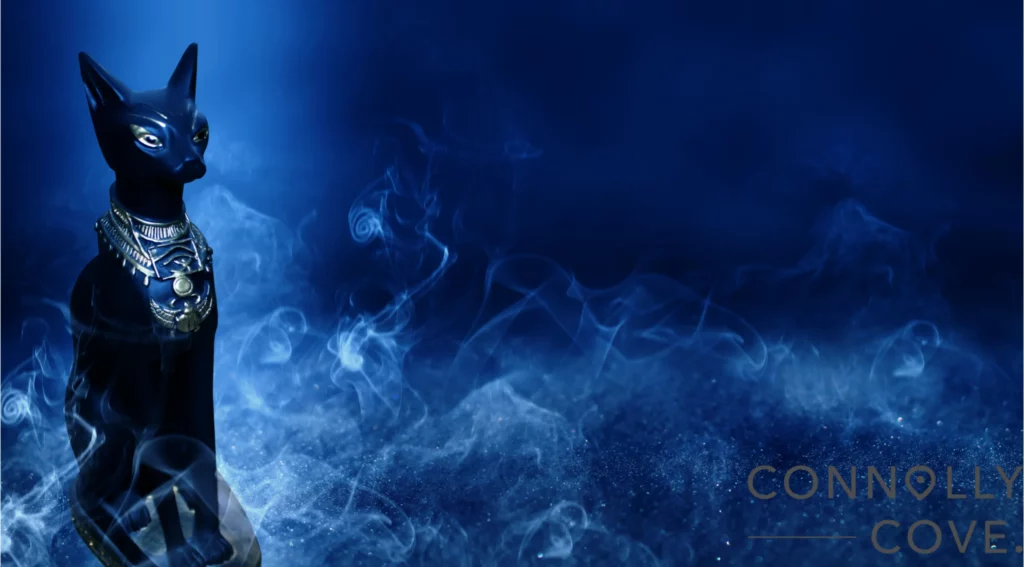
Bastet was another goddess represented by a cat, and no, the name had nothing to do with the pssst-pssst call we use when we want to attract cats’ attention. The name was derived from Bubastis, which was the ancient city in Lower Egypt where this goddess was worshipped.
Created by Amun, the chief of all deities, in the second Dynasty (2890-2686 BC), Bastet was the goddess of beauty, love, fertility, motherhood and birth, which are evident traits in cats. She also protected the pharaoh from evil spirits and diseases.
From her creation in the second Dynasty until the Third Intermediate Period (1100-650 BC), Bastet was depicted as a lioness. But after that, and until she was no longer worshipped, she was represented by a cat-headed woman or just a cat with several kittens.
Ancient Egyptians built a temple for the goddess Bastet on an island in the same city, Bubastis, where her cult was centralised. It reportedly had a beautiful design that surpassed many other temples built at the time.
Interestingly, when the temple was excavated in the late 19th century, archaeologists found hundreds of thousands of mummified cats there, as if the temple were already a cat cemetery. Many of these mummies were found buried beside who were apparently their owners.
Sekhmet
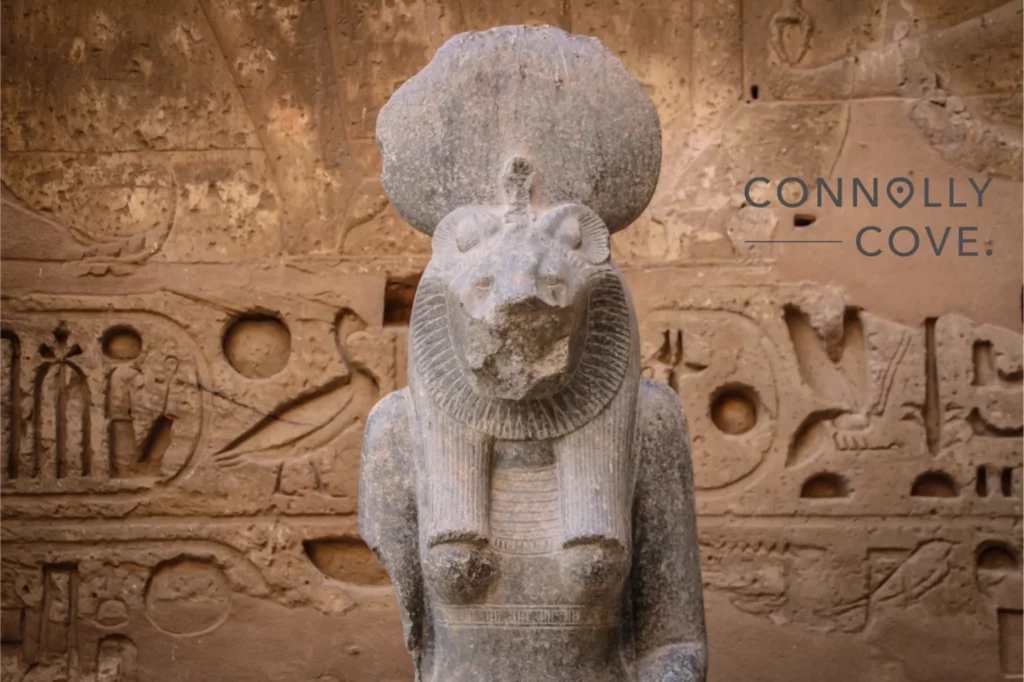
Sekhmet was another ancient Egyptian goddess that appeared approximately in the third Dynasty—the first king of this Dynasty was Djoser who built the world’s first pyramid, the Step Pyramid. Sekhmet was the daughter of Ra, the Sun’s god. She represented a manifestation of his powers and held a critical position among the many other deities in the ancient Egyptian religion.
That is why Sekhmet was made the goddess of war and destruction. But no, she was not there to destroy the world, since gods, by definition, are good and fair. Instead, Sekhmet was to kill those who threatened the power of the Sun god Ra.
At first, and like Bastet, Sekhmet was depicted as a powerful lioness or a lioness-headed woman. On the lioness’s head, the Sun’s desk, which symbolised her father, Ra, was placed. She was also Bastet’s sister, which sometimes made it hard to tell them apart in paintings, given that both were depicted as lionesses.
As fierce and violent as a lioness could get, Sekhmet also breathed in fire and hot desert wind. But it was believed she turned into a household cat when being in a calm state. However, there do not seem to be many paintings or depictions of Sekhmet as a cat. This either means her getting into such a quiet state was a rare event or that her depiction as a cat just lacks evidence.
At some point in her existence, which stretched from the Old Kingdom (2686-2181 BC) all the way to the New Kingdom (1550-1069 BC), Sekhmet was also appointed the goddess of healing and medicine and the one who led, inspired, and helped doctors—yes, there were doctors back them just like there were engineers who designed all the terrific ancient Egyptian monuments.
Have you not noticed anything?
All the deities cats symbolised were goddesses. Apparently, or that is how we like to think about it, ancient Egyptians also had the exact same unjustified belief that all cats are females, just like we do!
Although you do not need to go as far as mummifying your pet cat like ancient Egyptians did to show how much you care about cats, you can still provide them with help in the form of food, shelter, medicine and protection as much as you can.
You can also come for a visit to Egypt. Besides enjoying a wonderful travel experience moving between the endless attractions, you will get to see for yourself how ancient Egyptians loved, appreciated and honoured those beautiful little creatures like no other nation ever did.



